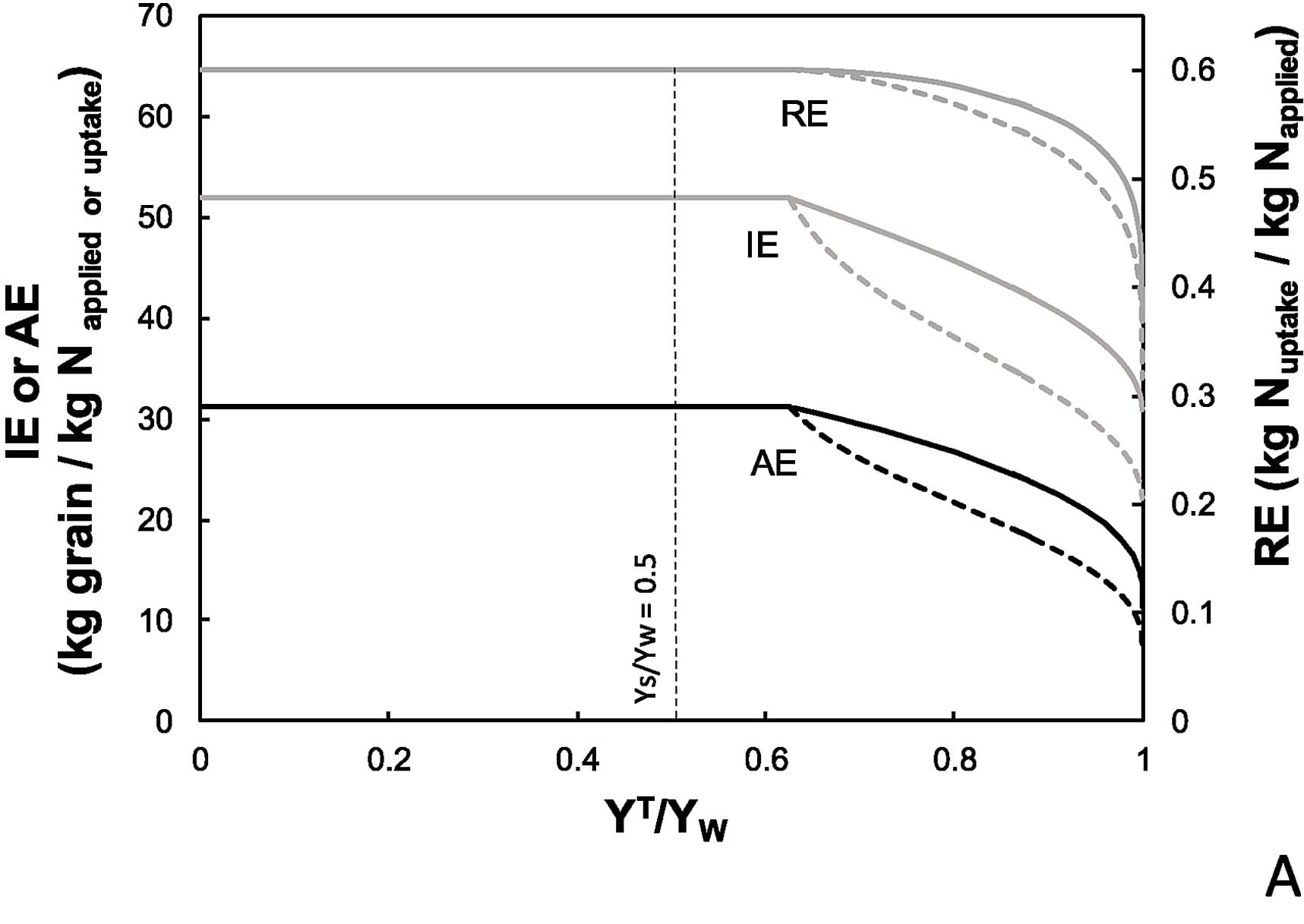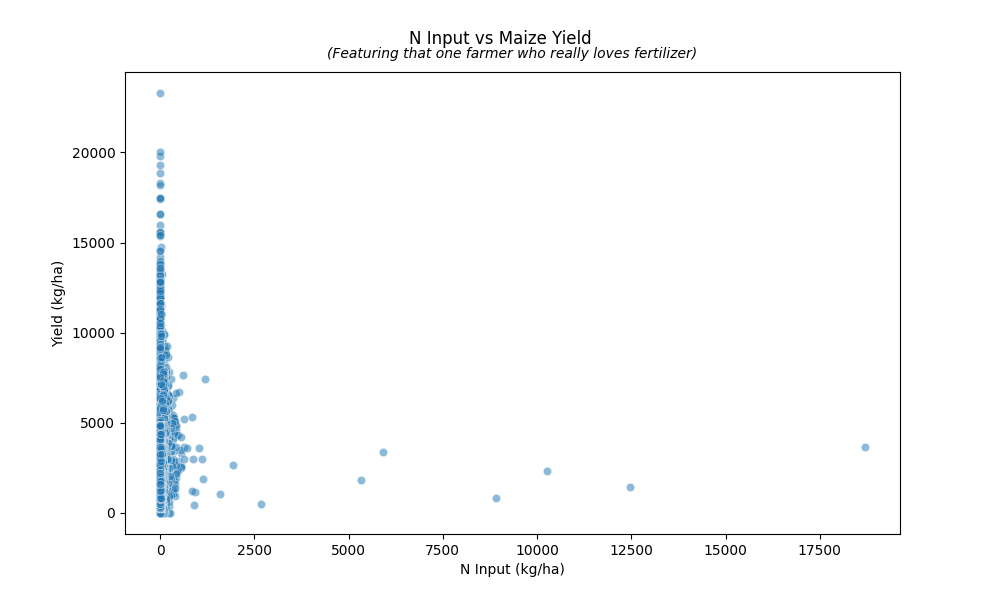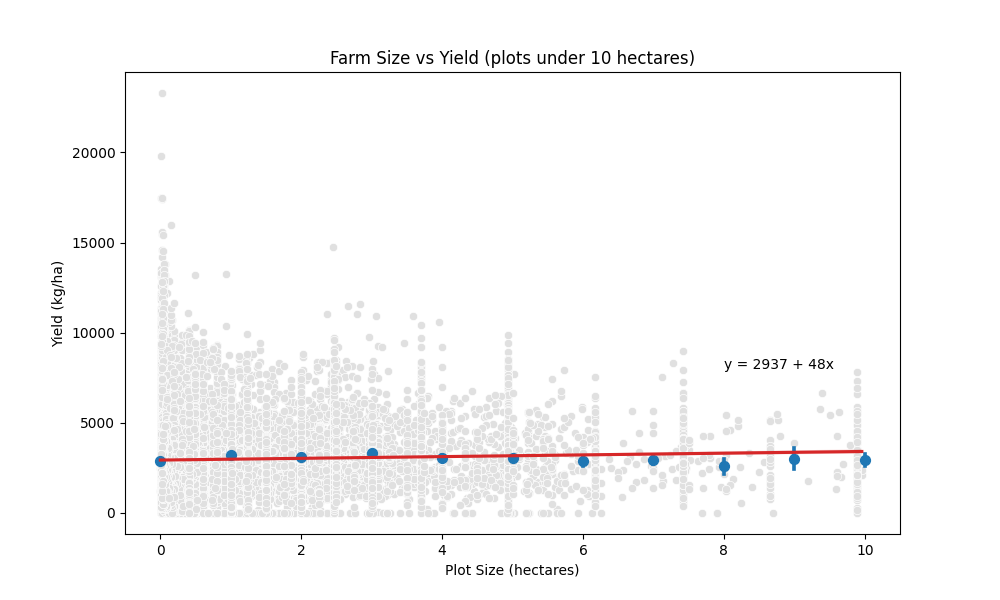What influences fertilizer demand in Sub-Saharan Africa?
Fertilizer is a tool for increasing yields, so we might expect demand for fertilizer to stop at the point cost of additional fertilizer matches cost of additional expected yield.
Fertilizer's return on investment
Here are some numbers:
- Duflo08 claims maize sells at $0.60/kg maize. Statista agrees.
- In the previous post, we found that urea costs around $0.80/kg. Urea is 46% nitrogen, so that gives us $2/kg N.
- This Facebook post says DAP fertilizer costs around $1/kg. DAP is 18% nitrogen, so that gives us $5/kg N. Let's use this larger number as the price of nitrogen.
- Dividing these gives us 8 kg maize per kg N. That is, if we can get at least 8 additional kg maize for each additional kg N, fertilizer is profitable.
Fertilizer's impact on yield
ten Berge19 provides a simplified model for the relationship between fertilizer and yield:

AE (kg maize yield / kg N) = RE (kg N uptake / kg N applied) * IE (kg maize yield / kg N uptake). YT is target yield, and YW is maximum realistic rainfed yield. As the ratio of target yield to optimal yield gets closer to 1, we expect that fertilizer hits diminishing returns, which is shown in the right part of the graph. The graph predicts that we'll get an additional 30kg yield per kg N applied.
This is just a model, but the values aren't super unrealistic. ten Berge19 finds that AE actually is incredibly variable and varies between -5 and 40 kg yield / kg N. Clearly there are many other limiting factors besides fertilizer uptake.
One Acre Fund (1AF) conducted ~81,000 surveys of smallholder farmers in Sub-Saharan Africa, and published their results here. They have data on (self-reported) fertilizer use and yield. To try to look for broad trends, I converted all fertilizer to kg N input / hectare (by multiplying fertilizer use by the fertilizer's nitrogen content percentage). Of course, there will be lots of confounding factors and only looking at the N content of fertilizers is an oversimplification, but let's just look at the relationship to see if there's obvious trend:




Yeah so I don't think there are any obvious conclusions here. The final linear regression seems stronger at least – that is, we can say with more confidence that each additional kg/ha N will produce 8 additional kg/ha, if your current N input is less than 100 kg/ha. Above, we found that the breakeven yield for each additional kg/ha of fertilizer was ~8 kg/ha maize yield, so this seems to check out.
However, the data is very noisy and we haven't really looked at all the confounders. In a future post, we'll try to draw a causal diagram and see if we can tease out some causation from correlation.
Addendum: trying to get closer to causation
Surprisingly, pests and disease had little effect on average yield. The 1AF data only indicates whether pests/disease were present and not the severity of the infestation, which helps explains why the effect is so small. We won't control for pests/disease when looking for fertilizer's impact on yields.

Does farmer wealth affect yield? Wealthier farmers might have larger plots, so how does that correlate with yield? 30-50 additional kg/ha for each additional hectare of land! We might want to try controlling for this when trying to isolate fertilizer's effect.


Tittonell08 finds that planting date explains lots of yield variability: if farmers plant a few weeks later than the optimal time, yields decrease. I don't see a strong effect in the 1AF data:

Finally, it seems useful to control for location, but that is tricky... We can start by looking at correlations across nearby farms. I think some locations have higher payoff fertilizer than others. Controlling for location might be useful: it could help control for wealth, weather effects, outbreaks of pests, market demand for maize, and farming skill.